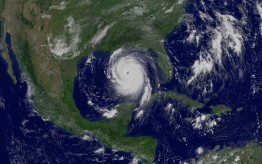On Tuesday, October 13, the Department of Earth and Space Sciences‘ David Montgomery presented on disasters fast and slow as part of the Surviving Disasters: Natural Hazards & Resilient Communities speaker series. Co-sponsored by the College of the Environment, UW Alumni Association, and UW Graduate School, Montgomery highlighted the types of mega-hazards that leave entire communities in shambles and garner attention around the globe.
Read more »New study uses high-speed search methods to better estimate climate threats to biodiversity
Climate change is perhaps felt most acutely in the Arctic right now, but by the start of the next century, animal species in the Amazon basin region will be harder hit as the Earth warms. In a study published this week in the journal PLOS ONE, researchers have used new high-performance computing methods and comprehensive data on the distribution of thousands of species to map the threat that climate change poses to birds, mammals and amphibians across the Western Hemisphere.
Read more at UW Today »Natural Hazards and Resilient Communities: Q&A with journalist Jed Horne
As a journalist, Jed Horne is after the truth. During his time as the city editor at The Times-Picayune in New Orleans, he spent a great deal of time examining the truth in order to tell authentic stories. Before and after Hurricane Katrina arrived at the city’s doorstep, the truth—especially what was conveyed to national and international audiences—was muddled. Horne set out to set the record straight.
Read more »Simulating path of ‘magma mush’ inside an active volcano
Months of warning signs from Mauna Loa, on Hawaii’s Big Island, prompted the U.S. Geological Survey to recently start releasing weekly updates on activity at the world’s largest active volcano. For now, such warning signs can only rely on external clues, like earthquakes and gas emissions. But a University of Washington simulation has managed to demonstrate what’s happening deep inside the volcano.
Read more at UW Today »Natural Hazards and Resilient Communities: Q&A with UW's David Montgomery
UW’s David R. Montgomery, professor of Earth & Space Sciences, knows there’s more to our planet’s surface than what’s at surface level. The geomorphologist studies the ground beneath our feet; both its propensity to shift and evolve and how those processes might affect ecological systems and human societies past and present.
Read more »




